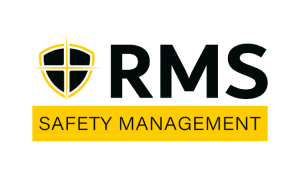Working in confined spaces can be very dangerous. In fact, 166 people died in “Permit Required Confined Spaces” in 2017. However, rescuing someone from a confined space can be equally as dangerous. According to the National Institute for Occupational Safety and Health (NIOSH), approximately 60% of confined space fatalities each year are “would be rescuers”. Yes, you read that right… more people die in confined spaces while trying to rescue someone than those who work in them!
How can this be? The reason is because it’s extremely difficult to stand at the entrance of a confined space and watch a coworker gasp for air without trying to save them. Afterall, most people spend as much or more time with their coworkers as they do with their own family members. They’ve gotten to know each other; they’ve heard about each other’s spouses and children; they’ve shared laughs and war stories. This personal bond, along with realizing how guilty they would feel if they didn’t do anything, can result in a significant amount of pressure to jump into immediate action (without protecting themselves first). And when one employee attempts rescue and gets overcome, others often follow suite, resulting in a domino effect.
So how can employers prevent this risk? The best way is to train and equip their employees to adequately control confined space hazards before and during entry, which eliminates the need for rescue all-together. However, planning can be incomplete, equipment can fail, and people can take shortcuts. Having a quick and effective rescue plan is still of critical importance.
Quick and effective. Those are the key words to remember when planning rescue. Quick response is important because brain damage can occur after 3-6 minutes without oxygen. An effective plan is important because a rescue plan that doesn’t function properly could compromise the safety of the rescuers and prevent rescue all-together. Let’s dive a little deeper into each of these key words.
Timeliness
How “quick” do designated rescuers need to be able to respond? OSHA does not provide employers much direction with this. All they say is, “An employer who designates rescue and emergency services must evaluate a prospective rescuer’s ability to respond to a rescue summons in a timely manner, considering the hazards identified.” They do go on to note that their Respiratory Protection standard requires a standby person capable of immediate rescue whenever employees work in an atmosphere that is “Immediately Dangerous to Life or Health” (IDLH), but that’s it. So where can we find the answer to this question? The best guidance we’ve found is the NFPA 350 “Guide for Safe Confined Space Entry and Work”. This guide offers the following direction:
- NO HAZARDS: When there are no recognized hazards but technical rescue could be required if an entrant would become incapacitated for some reason, trained and authorized responders should be able to arrive onsite within 5-minutes and be capable of setting-up and entering for rescue within 15-minutes.
- NON-LIFE-THREATENING HAZARDS: When non-life-threatening hazards exist, trained and authorized responders should be onsite and be capable of setting-up and entering for rescue within 12-15 minutes.
- LIFE-THREATENING HAZARDS: When life-threatening hazards exist, trained and authorized responders should be onsite, fully set-up, and able to enter for rescue within 2-minutes.
One thing to remember before moving-on is that calling 911 is not an acceptable or reliable rescue plan. Employers must either train their own employees to perform rescue, utilize a third-party that is trained and authorized to perform rescue, or coordinate rescue directly with a fire department that is capable – willing – available to provide rescue services. Fire departments should be communicated with directly (not through 911) and steps must be taken to involve them in the planning process (before entry). Employers must also make sure fire departments are available throughout entry and immediately exit the space should they become unavailable. This requires a lot of coordination and communication!
Effectiveness
In addition to being timely, rescue plans must be effective, which means they must be realistic and functional. There are many employers that rely on their own employees to perform rescue (which can work very effectively), but they don’t provide the necessary equipment or train their employees well. Without adequate equipment and training rescue operations are set-up to fail.
When it comes to providing rescue equipment, just buying a Self-Contained Breathing Apparatus (SCBA) respirator may not be the best approach. An SCBA may work in some spaces, but what if the entrance to a space is small? What if the rescuer will have to maneuver through tight spaces? A 200-pound man may not fit with a tank strapped to his back! In that case, a Supplied Air Respirator may be a better option. Also, how will the rescuer move someone to the entrance? They may be able to drag them, but what if objects are in the way? In that case they may need help and/or a stretcher. Each space should be analyzed independently so the right types of rescue equipment can be selected that will actually works.
Setting rescue teams up with the proper equipment is only half the battle though. Rescue equipment is useless if nobody knows how to use it. This is why training is so important. Rescue team members should be trained on all of the following: air monitors, ventilators, PPE, respirators, fall protection, tripods, winches, pullies, anklets, rescue carts, and anything else they are expected to use. They should also practice hands-on/simulated rescues at least annually. Hands-on training and simulated rescues help employees become more comfortable and confident with rescue. It also irons-out any flaws in the plan before needing to use it.
Conclusion
We encourage all companies that work in Permit Required Confined Spaces to establish quick and effective rescue plans. Please let us know if you need guidance with establishing your plans, selecting the right type of equipment, or training your employees.
-Kevin Beswick, RMS Safety President

